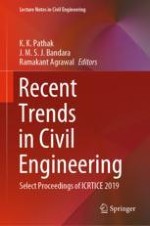2021 | OriginalPaper | Chapter
Influence of Partial Replacement of Cement by Industrial Wastes on Properties of Concrete
Author : Nikhil Kumar Verma
Published in: Recent Trends in Civil Engineering
Publisher: Springer Singapore
Activate our intelligent search to find suitable subject content or patents.
Select sections of text to find matching patents with Artificial Intelligence. powered by
Select sections of text to find additional relevant content using AI-assisted search. powered by
